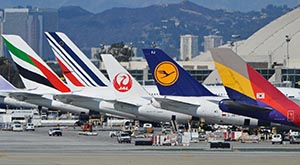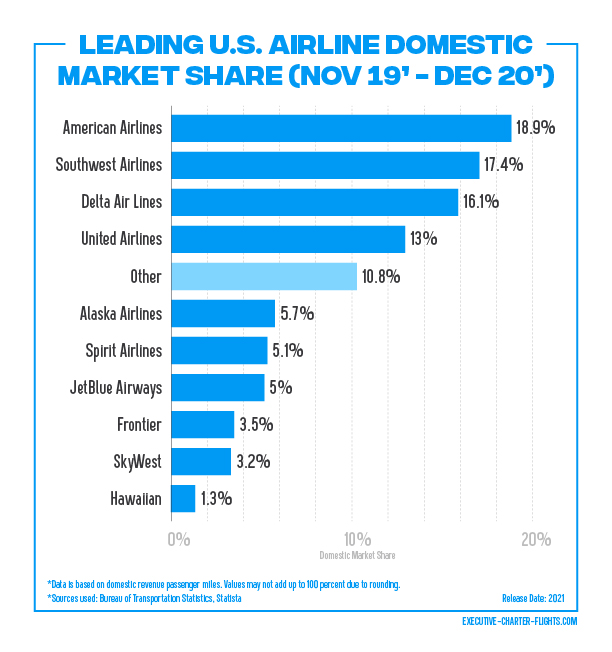An In-Depth Overview

When thinking about whether or not it’s a good idea to get involved with starting your own airline. You will come to the realization that there are many components that need your attention and oversight. Out of the many components that require attention, there is one thing that you are going to have to keep in mind about the scope and overall process. Not only is it difficult to co-ordinate all of the pieces that are needed to gain approval and get started. However, it will be even more difficult to stay consistent, grow and turn a profit.
No matter what time of year or state of the world and its economy. Starting an airline is going to be a considerable investment of time, money and require a large amount of capital. Just like any other startup, you’re going to need a business plan. However unlike most startups, airlines do tend to have more moving parts and obstacles to add to the equation. Having a thorough business plan that tackles important aspects such as:
- Executive summary
- Industry and target market
- Competitive analysis
- Opportunity
- Service offering
- Marketing and distribution plan
- Operations plan
- Management team
- Risks and mitigation plan
- Financial and operating projections
- Implementation schedule
- Capitalization plan
Will only assist with maneuvering through those challenges by solidifying the right contacts, certifications and approvals for helping get your airline business into service in a reasonable amount of time. Some requirements may even be needed before properly drafting up your business plan. While some areas of certification will require proof of funds or capital. However, having these markers in place will only make going through the entire process a little bit smoother.
If despite these factors, you’re still determined to learn more about how start an airline. Then the following information will be beneficial in commencing your journey and having a chance at success along the way. With the current state the world is in right now. Starting an airline may or may not be as challenging, considering the recent changes to the travel industry and added health / safety protocols.
It should be noted that this is a very complex area of discussion. It’s an industry that goes through many changes and can be adjusted or updated almost yearly or more. The country you live in can also change how this process works, so please use this as a general guide as opposed to a rule book.
What to Know About How to Start an Airline Company
Contents
Although it is considered a worthy component. A business plan is only one important aspect of what you will need to prepare in order to begin the process of starting an airline. Below is a brief overview of the other important components that you will require, in order to gain approval and successfully launch your airline business.
1.) Airline Market Analysis & Industry Overview
 Like any business you’re looking to start. You are going to want to have a look at the market and gain a good understanding of the industry before you invest your time and/or money. Market analysis can really help give you a preview into the landscape, demand and characteristics of the airline industry. Having this insight can greatly help influence the decisions in your business plan, aircraft selection, route planning, capacity planning and more.
Like any business you’re looking to start. You are going to want to have a look at the market and gain a good understanding of the industry before you invest your time and/or money. Market analysis can really help give you a preview into the landscape, demand and characteristics of the airline industry. Having this insight can greatly help influence the decisions in your business plan, aircraft selection, route planning, capacity planning and more.
Part of analyzing the market, is understanding what niche or consumer need that your company can fulfill. When entering into such a competitive space. You’re going to want to have your ducks in a row. Competition is going to be very fierce and unless you bring something fresh or unique to the table. You are going to have a hard time surviving against other carriers of the same size or larger.
A few questions you may want to consider asking yourself or your team are:
- Do you see a need that your airline can fulfill?
- What does the competition currently look like?
- What does your airline provide to the market that is beneficial or unique?
- What services do you plan to offer? (charter, passenger service, cargo etc.)
Another thing you may want to consider when analyzing the market is the frequency of flights at the airport you wish to operate from. If you’re a well-known or full service carrier, traveling in and out of high traffic airports may not be a problem. If you are new however, that may be an issue. It might be more effective to operate out of an airport or hub that is not as busy. Not only does this give you more opportunity to handle your operations with care and at an optimal level. It also allows you that extra interaction with your customers, which in turn helps them to get to know you better as a new carrier.
They say, an aircraft on the ground is an aircraft at a loss. Which for many startup airlines seems to be a challenge, if not thought about beforehand (or discussed in their plan). Keep in mind that no matter how many hours your aircraft is in the air. There are still many fixed costs that need to be taken care of each month. Natural disasters and world economic crisis are other challenges that have made it difficult for airlines to stay afloat. Events like 9/11 have not only increased restrictions on travel, but have also imposed new security guidelines, safety protocols and operating costs.
For more on the commercial aviation market. You can visit the links below from IATA & Boeing. These sources help detail the type of information you will want to look at before starting your business plan.
Some of the information that you can find includes analysis of:
- Commercial market outlook
- Airport, country & regional data
- Air cargo forecast (worldwide)
- Domestic passenger markets
- Demographic trends
- Finance market outlook
IATA Market Analysis Reports | Boeing Market Analysis
For a broader view of what is projected to change in the coming years within the industry. See this article on the 7 trends that will reshape the airline industry by the Boston Consulting Group.
2.) Understanding Your Operating Environment
Once you’ve had a chance to look at the market and start forming ideas as to your approach and where you might fit in. You will want to start looking into your operating environment. This includes the different standards, government & federal regulations, rights or certificates etc. that you will require in order to legally open your doors and get your aircraft into the air.
Some of these certificates and regulatory requirements include:
- Economic Authority (DOT)
- Safety Authority (FAA)
- Part 135 Air Carrier & Air Operator Certification
- Part 121 Air Carrier Certification
- Airline Operator Certificate (AOC)
- Airworthiness Certification
Some other areas to consider when looking into your operating environment include; maintenance, repair, employees, training, fuel and more.
International Traffic Rights
The Freedoms of the Air was formulated in 1944 and is an international civil aviation agreement which consists of nine freedoms. This allows permission for a particular airline to enter into a country’s airspace. ETOPS (Extended-range Twin-engine Operational Performance Standards) is another program and set of standards where you will need to gain approval. ETOPS, is essentially a certification that allows Twin-engine aircraft to travel on particular flight routes that may be further than 60 min from the closet airport / hub that can accommodate an extended diversion or emergency landing.
These are just a few examples of the rights and regulations that you will need to have in order to advance your business plan and achieve the goals you have set forth in reaching. The information above should give you an idea of the regulatory standards within the environment you are looking to get involved in. Pair that with tax laws, labor laws, regularly changing safety standards etc. And it may start to sound quite overwhelming.
However, once you gain an understanding of your operating environment. The requirements needed for that environment and how to navigate seamlessly with your team. You will then be in a position to start taking more action on the steps in your business plan, to begin operating your airline as envisioned.
3.) Aircraft Sourcing & Selection
 The next thing you will want to shift your focus on is sourcing. As a buyer, making the right selection for your budget, competitive analysis and overall forecast of your business goals. Is one step that is crucial to the process of starting an airline effectively.
The next thing you will want to shift your focus on is sourcing. As a buyer, making the right selection for your budget, competitive analysis and overall forecast of your business goals. Is one step that is crucial to the process of starting an airline effectively.
Once you have come to an understanding of your business’ focus and the opportunities you would like to take advantage of. Have thoroughly analyzed your market and competition. Finished planning and scheduling your route, analyzed traffic estimates etc. It should be somewhat clear as to the size and number of aircraft you wish to operate within your airline.
If you plan to serve a small capacity of passengers or travel over a short-range. You may want to look into a light jet, medium jet or a turboprop. However, if you’re looking to serve a large capacity of passengers or travel or a long-range. You might be better off looking into an Airbus or Boeing instead.
When you have figured out how many aircraft and the type you wish to contain in your fleet (new or used). At this point, you are going to need a broker or a supplier to help research and source these aircraft for you to lease or purchase outright.
Aircraft Management
Aircraft management is essentially the control and oversight of all services that are required to operate your aircraft. In many cases you’re going to have to hire more than one full-time pilot along with maintenance staff. It is also beneficial that your pilots and maintenance are already trained to operate and service similar aircraft that you will be purchasing. In addition to the above, you’re going to have to look into hiring; flight crew, avionics technicians, airline administrative support, sales management, flight dispatch, ground airport station attendants, airline ticket agents, passenger service agent, aviation attorney and more.
Besides having to decide between a large or a small management company. Determining what style of management you are looking for, is also important. For example, aircraft management can be handled from two different approaches. Charter or turnkey.
With charter aircraft management. The management company will provide chartering services, while the operator is able to maintain aircraft operations. Essentially working closely together. On the other hand, turnkey aircraft management allows the management company full control of the aircraft available. This means that they take full control of the operational and management responsibilities.
When locating a good aircraft management company. Try not to settle for any offer, but rather look for a company that has your best interest in mind and is willing to stick with you for the long haul. *Finding a team that understands your vision and supports your company direction is even better.
For more information on the buying or leasing process, be sure to click here for a fairly detailed guide. If you’re in need of a broker or supplier to assist with finding aircraft for your airline. Don’t hesitate to give us a call or send us an email.
4.) Commencing Operations of Your Airline
Starting your airline, maintaining your airline and continuing your momentum as you progress through each year. Is quite challenging and a large reason why many startups do not succeed or turn much of a profit.
Once you open your doors, there is a good chance that you will cut deeply into your initial investment and capital quite quickly in the first few months. Despite what you may have forecasted in your business plan. There is a large possibility that you will need to spend more than anticipated to reach the targets that you initially set forth.
It will also be challenging to maintain a flight schedule with a full capacity of passengers on a consistent basis. Marketing, promotion and any other legitimate means that you can think of to spread the word about your business, will be essential to the growth of your airline. If and when you’re able to build a consistent customer base. You should then be able to start seeing some return on your investment. As an airline, this should be your main focus regardless of what type of airline you choose to operate.
As mentioned previously, an aircraft on the ground is an aircraft at a loss. However there are ways that you can make a profit whilst your aircraft is on the ground. Some of these methods include cargo / freight. Although keep in mind that if you choose to move cargo, there is a higher chance it will cause more wear and tear on your aircraft as opposed to passenger transport.
For assistance and to learn more information on how to start your airline and get it up and running. We recommend taking a look at what Boeing has to offer in this area. They can not only help get you to the point of approval, but can also help educate and instil confidence in your vision and plan along the way.
If you’re familiar with Startup Boeing and are looking for additional options. Contact us and we can see who we can put you in touch with.

Things to Also Consider
- Fuel costs especially for startups can be quite high. In some cases, you may be looking at fuel costs taking up anywhere from 30-50% of your overall expenses.
- Many airline operators choose to lease rather than purchase their aircraft. It’s more cost effective up front to lease five aircraft than it is to buy five aircraft. Especially when you’re just starting out. Keep in mind, just like any business. The larger your order, the larger your potential for a bigger discount. *As per Boeing, leasing represents more than 40% of in-service commercial aircraft ownership.
- Both Boeing and Airbus are seeing an increase in cancellations. Thus allowing aircraft to be sold at larger than usual discounted prices to free up their backlog.
- The owner of Ryanair believes that once air travel is able to continue as normal. There will be a price battle among the already established players. Being a new airline might be difficult if you’re trying to compete in this price battle from the get go.
- As per Business Insider, Virgin America was one of the most successful startup airlines in recent history. Virgin began their operation with a single Boeing 747 airliner in 2007. They later grew and expanded their fleet as demand started to increase. Virgin was then acquired by the Alaska Air Group (Alaska Airlines) in December of 2016 and the department of transportation (DOT) issued an operating certificate for the combined airlines in January 2018.
- As a startup, it’s important to be aware of the level of competition you will be dealing with from full service carriers. It has been demonstrated, that legacy or full service carriers will try to squeeze out smaller low-cost carriers when given the opportunity. Other tactics include but aren’t limited to; reducing available seats and increasing airfares, slot sitting etc.
- 2020 is said to be the first time since the financial crisis in 2008 that the airline industry has seen such a decline. If you’re into stocks and understand the importance of buying low and selling high. Then this is not necessarily a bad time to get involved. The bigger question is, can you still make something that can sustain itself while being profitable during this time?
Additional Resources
- An example of an actual airline business plan from a company in London, United Kingdom from Reference for Business.
- Here is another example of a business plan from Bplans. This plan was also created by another company and cannot be re-used. Right click the page to be prompted to download the document. *If you submit your email, they will provide you with explanations on how to fill out each section at a professional level.
- IATA’s Economic Performance of the Airline Industry.
For more information on the leasing process, navigate here. Or, click here to go back to the homepage.